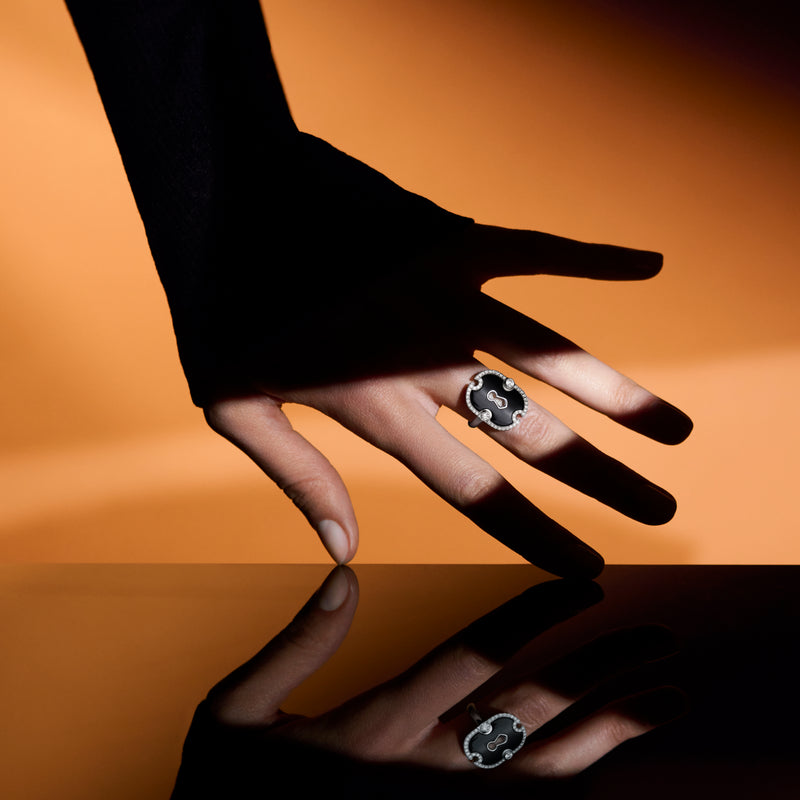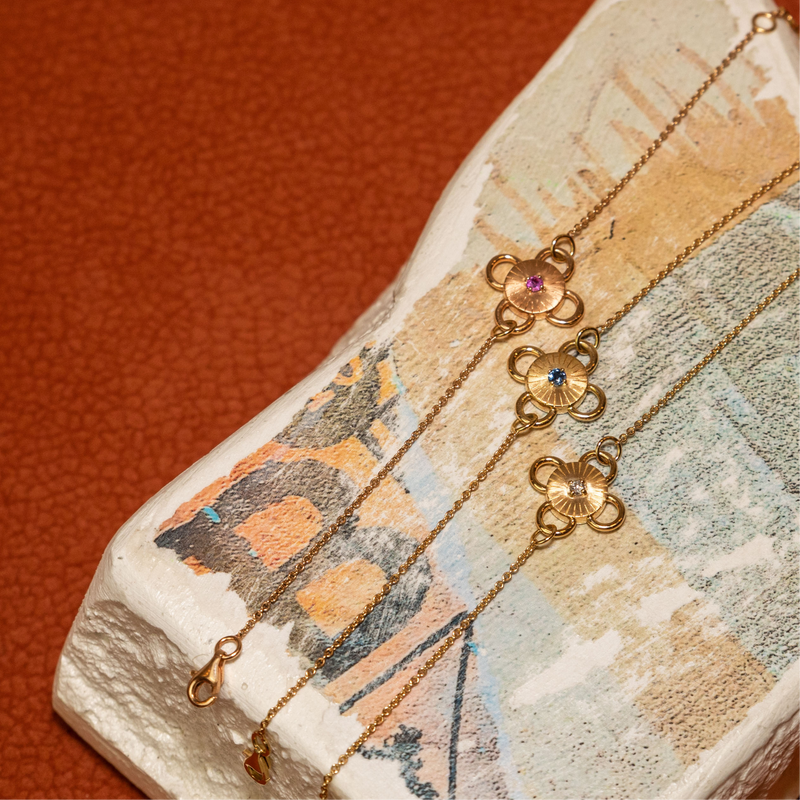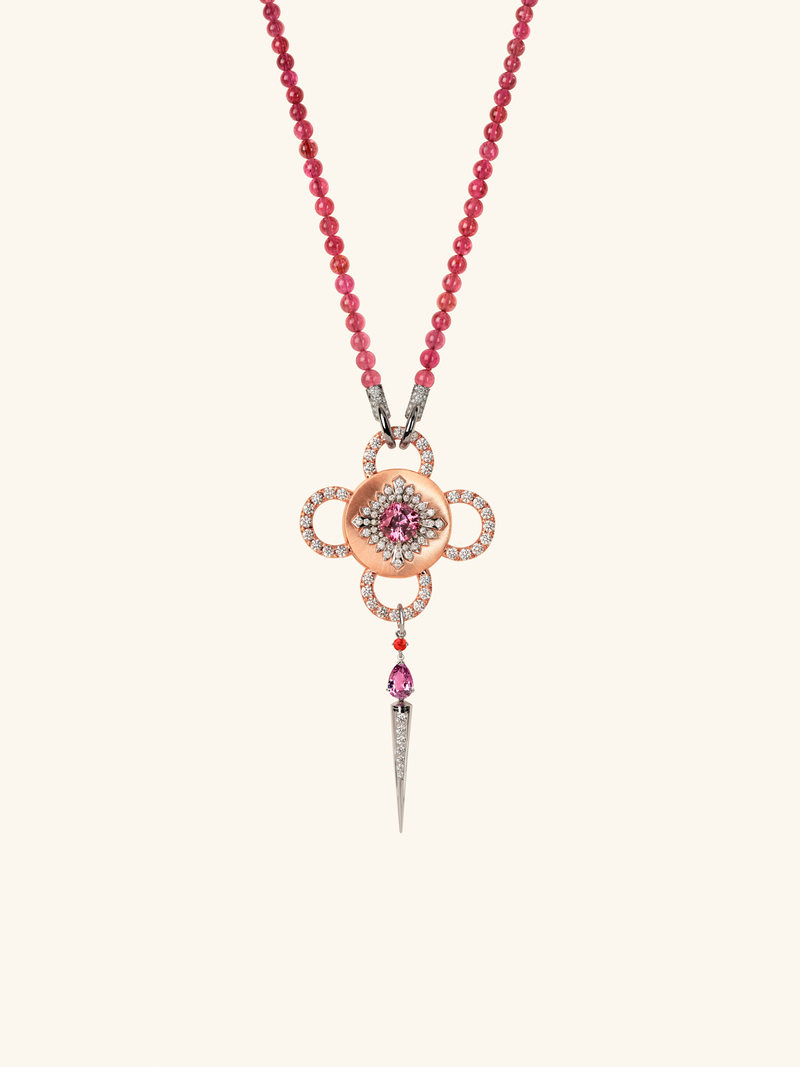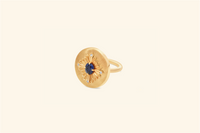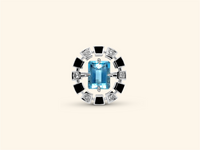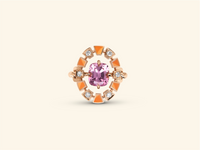L’AMETHYSTE

Famille des quartz.
Couleur : violet profond à lilas.
Dans l’Histoire
Cette pierre tient sa couleur, dans la légende, du Dieu Dionysos, ayant jeté son vin aux reflets pourpre sur une pierre pure de quartz que la déesse Diane venait de créer. Elle était ainsi considérée comme un talisman contre l’ivresse.
LA CALCEDOINE
Famille des agates, une variété de Quartz.
Couleur : bleue ou pêche.
Dans l’Histoire : Dans la tradition grecque antique, la calcédoine serait la pierre de la terre mère, la déesse Gaia et favoriserait l’éloquence et la parole selon les romains. Elle était très appréciée dans l’Antiquité.
L’AIGUE MARINE
Famille des Béryls.
Couleur : bleu clair avec des nuances turquoise.
Provenances : les mines les plus importantes se trouvent au Brésil mais on les trouve aussi en Namibie, au Sri Lanka, en Inde ou en Russie.
Dans l’Histoire : De par sa couleur, elle est connue depuis l’antiquité comme la pierre du marin. Ces derniers la portaient souvent comme talisman contre le mal de mer, les tempêtes et pour revenir sains et saufs des longs voyages.
Célèbre : La Dom Pedro est la plus grande aigue-marine taillée au monde (10 395 carats – 2,07kg). Elle forme un obélisque, réalisée par le sculpteur Bernd Munsteiner.
LE PÉRIDOT
Couleur : vert vif à vert olive d’où son nom d’Olivine.
Dans l’Histoire : Le péridot était connu par les égyptiens comme « pierre du soleil » et a toujours été lié au concept de lumière de par sa brillance.
Célèbre : Au Palais Topkapi à Istanbul ; le trône « des cérémonies » qu’utilisaient les sultans, est recouvert de plaques d’or incrustées de 954 péridots de belle dimension.
LA CITRINE
Famille des quartz.
Couleur : jaune.
Dans l’Histoire : Dans l’Égypte ancienne, la citrine et l’agate sont utilisées couramment contre le venin des serpents. Par la suite, elle devint très à la mode sous le règne de Charles X.
Célèbre : René Lalique, célèbre maître verrier et bijoutier réalisa en 1910 une célèbre broche carrée ornée de citrines au goût de l’Art déco.
LE QUARTZ ROSE
Famille des Quartz.
Couleur : rose pâle.
Principales provenances : Brésil, Inde, Mozambique, Namibie.
La présence de minuscules aiguilles de rutiles dans le cristal lui confèrent une douceur particulière. Ces pierres sont généralement taillées en cabochon pour faire ressortir leur chatoyance.
L’OPALE
L’opale provenant d’Australie a une base noire ou grise sur laquelle les couleurs forment un dessin, appelé « jeu de couleurs » plus ou moins organisé. C’est tout le charme de ces pierres qui sont toutes absolument uniques et dont les couleurs varient en fonction de la lumière et de leur orientation.
L’opale d’Afrique est translucide et le jeu de couleurs se voit dans toute la matière. L’opale de feu, provenant essentiellement du Mexique est de couleur orange à rouge, transparente ou translucide. La couleur est homogène, il n’y a pas de jeu.
Dans l’Histoire : De très nombreuses histoires existent sur l’opale. En Australie, les aborigènes l’appelaient « serpent de l’arc-en-ciel » et selon la légende, le dieu créateur aurait pris les couleurs de l’arc-en-ciel et les aurait réunies pour créer ainsi, l’opale.
Une opale célèbre : L’opale Andamooka a été présentée par la reine Elizabeth II dans les années 50 lors de son premier voyage en Australie : elle fait 203 carats et a été sertie sur un pendentif et entourée de diamants.
LA TOPAZE
Famille : silicates.
Couleur : blanc, bleu, vert, jaune, orange, rouge, rose, violet et multicolore.
Dans l’Histoire : La Topaze est connue depuis l’Antiquité où elle était déjà mentionnée par Pline l’Ancien. De plus, la topaze impériale est originaire de Russie au 19e siècle: à cette époque les montagnes de l’Oural étaient une source majeure de topazes et les plus belles d’entre elles – topazes impériales – furent nommées en l’honneur du Tsar russe et leur possession fut limitée à la famille royale.
Célèbre : La topaze « Braganza » a été trouvée en 1640 dans la région d’Ouro Preto. Pesant 1 680 carats, elle fut montée sur la couronne du Portugal.
LE CHRYSOBÉRIL
Couleur : jaune verdâtre, gris, brun-ocre, vert bleuté sont fréquents mais il en existe de toutes couleurs.
Le chrysobéryl dit Alexandrite est célèbre par son changement de couleur dû à son exposition à la lumière naturelle ou la lumière incandescente, passant dans les plus exceptionnels du vert en lumière artificielle au rouge sous lumière incandescente.
LA TANZANITE
Famille des Zoïsites.
Couleur : bleu, violet.
Gisements : Actuellement, la tanzanite ne provient que d’un gisement en Tanzanie. Les quantités de cristal sont limitées et il est fort probable que les gisements soient épuisés dans les 20 années à venir.
Dans l’Histoire : En 1967, un membre des tribus Masaï découvre par hasard un cristal bleu scintillant au pied du Kilimandjaro en Tanzanie qu’il confond d’abord avec un saphir. Il est ensuite établi que telle pierre n’a jamais été découverte au préalable et elle est prénommée d’après son pays d’origine.
LE JADE
En joaillerie c’est le Jade Jadéite qui est utilisé.
Couleurs : Vert, mauve, blanc, exceptionnellement noir.
Dans l’Histoire : Des milliers d’années durant, le jade fut un symbole d’amour, de vertu ainsi que d’un certain statut social. En Asie, cette pierre a été le symbole des dynasties impériales par excellence. Dans la Chine d’il y a 9 000 ans, le jade était vu comme l’intégration des essences vivantes du Ciel et de la Terre; il était sacré.
LE LAPIS LAZULIS
Famille : silicates.
Couleur : Bleu profond souvent tacheté de cristaux de pyrite dorés.
Dans l’ancienne Égypte il était utilisé pour créer des bijoux mais aussi des décors muraux ou des masques mortuaires pour les rois, comme celui de Toutankhamon.
Le lapis-lazuli fut également l’un des principaux pigments utilisés par Michel-Ange pour peindre la Chapelle Sixtine.
LA TURQUOISE
Couleur : de bleu pâle à bleu vert.
Le nom turquoise, qui signifie Pierre de Turquie, s’explique par son transit commercial à travers ce pays. Elle était déjà extraite dans des mines du Sinaï 4000 ans avant J.C. Actuellement, on la trouve en Australie, au Brésil, aux États Unis ou encore au Mexique.



